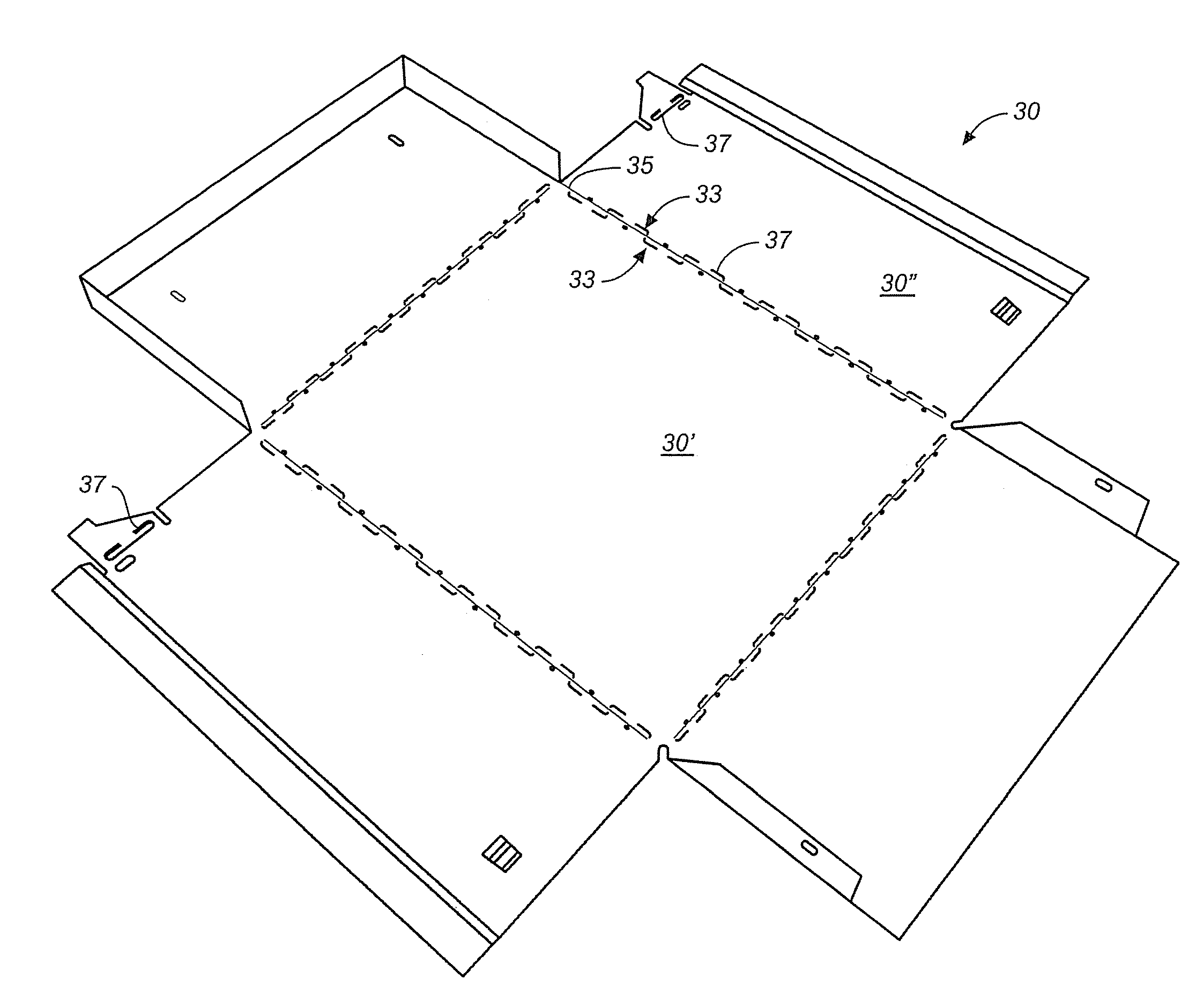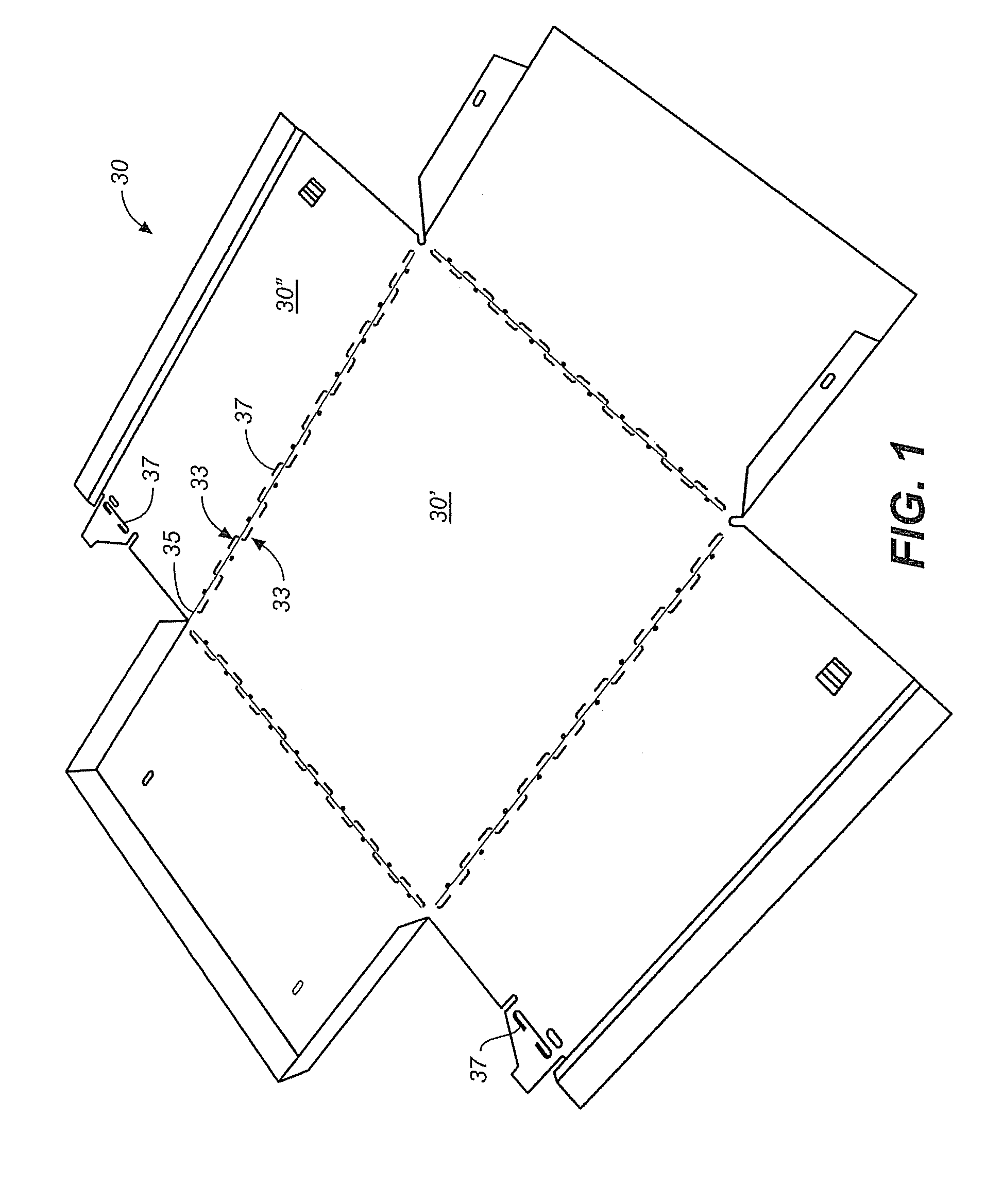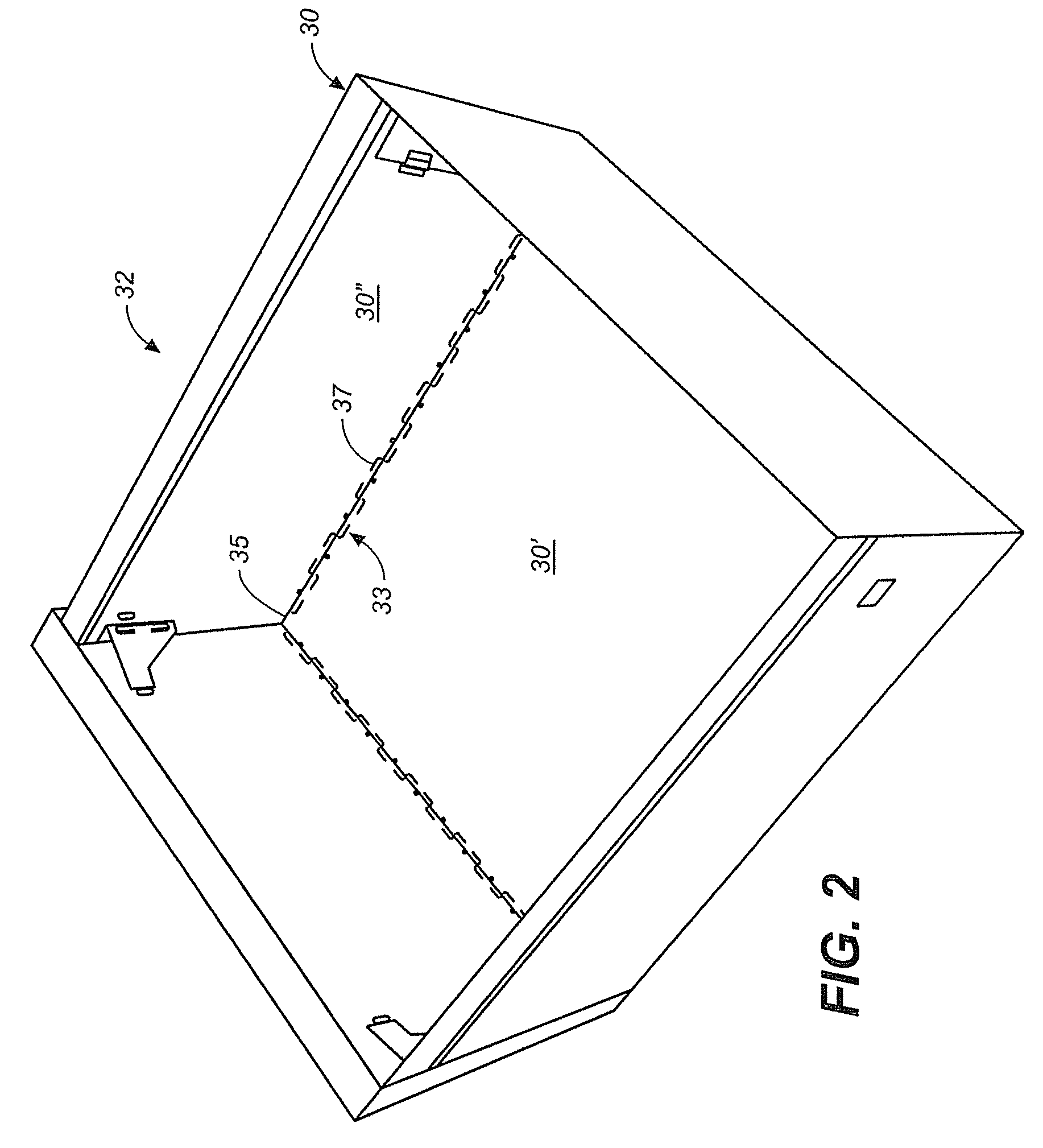Method of forming two-dimensional sheet material into three-dimensional structure
a technology of two-dimensional sheet material and three-dimensional structure, which is applied in the direction of forging/pressing/hammering equipment, paper/cardboard containers, handling devices, etc., can solve the problems of electromagnetic wave or radio frequency signal noise leakage out of the structure, reduce the strength of the folded structure, and increase the risk of damag
- Summary
- Abstract
- Description
- Claims
- Application Information
AI Technical Summary
Benefits of technology
Problems solved by technology
Method used
Image
Examples
Embodiment Construction
[0037]Reference will now be made in detail to various exemplary embodiments of the present invention(s), examples of which are illustrated in the accompanying drawings and described below. While the invention(s) will be described in conjunction with exemplary embodiments, it will be understood that the present description is not intended to limit the invention(s) to those exemplary embodiments. On the contrary, the invention(s) is / are intended to cover not only the exemplary embodiments, but also various alternatives, modifications, equivalents and other exemplary embodiments, which may be included within the spirit and scope of the invention as defined by the appended claims.
[0038]Turning now to the drawings, wherein like components are designated by like reference numerals throughout the various figures, attention is directed to FIG. 1 and FIG. 2 which disclose an exemplary two-dimensional (2D) sheet material 30 that has been dimensioned and configured to form a three-dimensional ...
PUM
| Property | Measurement | Unit |
|---|---|---|
| shielding | aaaaa | aaaaa |
| radio-frequency | aaaaa | aaaaa |
| surface area | aaaaa | aaaaa |
Abstract
Description
Claims
Application Information
 Login to View More
Login to View More - R&D
- Intellectual Property
- Life Sciences
- Materials
- Tech Scout
- Unparalleled Data Quality
- Higher Quality Content
- 60% Fewer Hallucinations
Browse by: Latest US Patents, China's latest patents, Technical Efficacy Thesaurus, Application Domain, Technology Topic, Popular Technical Reports.
© 2025 PatSnap. All rights reserved.Legal|Privacy policy|Modern Slavery Act Transparency Statement|Sitemap|About US| Contact US: help@patsnap.com



